Table of Contents
Digital-to-Digital Conversion
As we have already told you that data can either be in analog form or in digital form. So let us learn how can we represent digital data in the form of digital signals.
Three techniques used for this conversion are as follows:
- Line Coding
- Block Coding
- Scrambling
Line Coding
Line coding is the process used to convert digital data to digital signals. Assume that the data is in the form of text, numbers, audio, or video and that it is stored in the computer as a series of bits. As a result, line coding converts a series of bits into a digital signal. Digital data is encoded into digital signals on the sender side, and digital data is regenerated on the receiver side by decoding the digital signal.
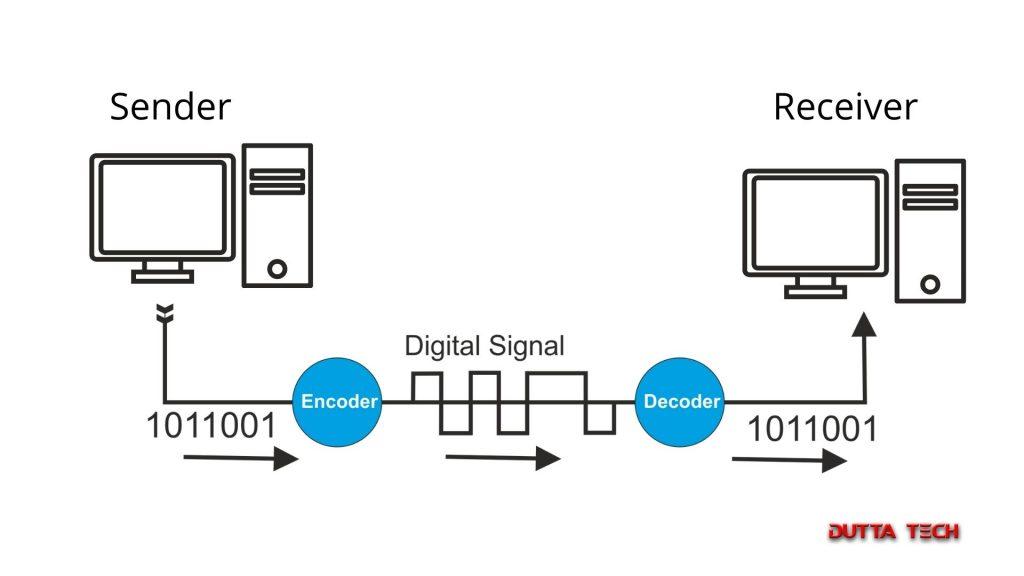
Line Coding and Decoding are depicted in the diagram above.
Five different types of line coding techniques can be found:
- Unipolar
- Polar
- Bipolar
- Multilevel
- Multi Transition

Unipolar Method
All of the signal levels are on one side of the time axis in this line coding method.
It could be either above or below the surface. Unipolar Scheme is a Non-Return-to-Zero (NRZ) scheme in which positive voltage represents bit 1 and zero voltage represents bit 0. Only one voltage level is used in the unipolar scheme. Because the signal does not return to zero in the middle of the bit, it is dubbed NRZ.
Unipolar NRZ Scheme
This coding system is both cheap and easy to adopt.
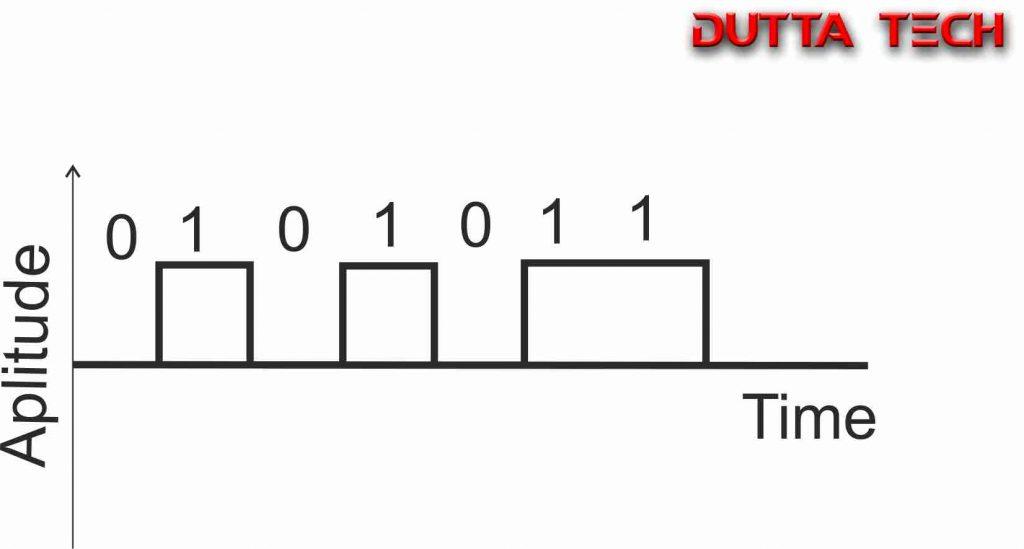
Polar Method
The voltages are on both sides of the time axis in this line coding method.
Consider the following example: the voltage level for 0 can be positive, whereas the voltage level for 1 can be negative.
As a result, we use two levels of voltage amplitude in Polar NRZ encoding.
Polar NRZ comes in two versions:
- NRZ-L(NRZ-level)
The bit’s value is mostly determined by the voltage level. As a result, the signal’s level is determined by the bit’s value.
- NRZ-I(NRZ-Invert)
The value of the bit is mostly determined by the change in voltage level. If there is no change, the bit will be 0; if there is a change, the bit will be 1.
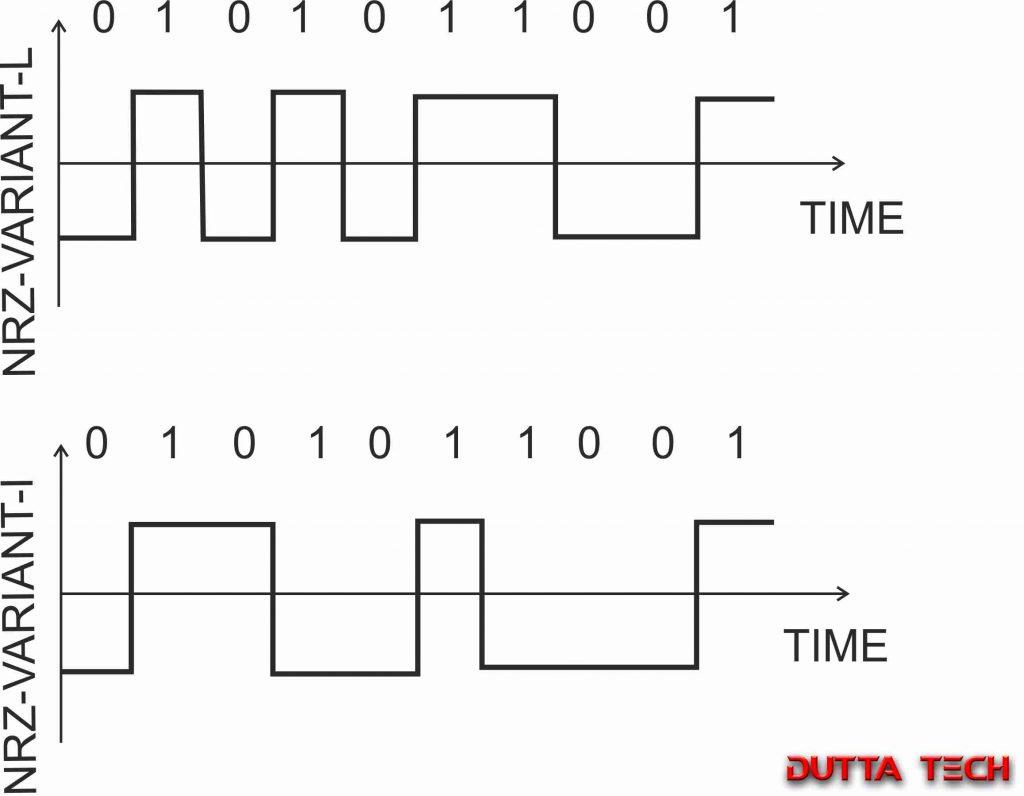
There will be no inversion in the diagram above if the next bit is 0. Inversion, however, will occur if the next bit is 1.
Bipolar Method
There are three voltage levels in the Bipolar method: positive, zero, and negative. One data element’s voltage level is set to 0, while the voltage levels of other data elements alternate between positive and negative.
Given The following are two examples of Bipolar Encoding:
- AMI(Alternate Mark Inversion)
It simply implies an inversion 1 alternative. Binary 0 is represented by a neutral zero voltage, while binary 1s are represented by alternating positive and negative voltages.
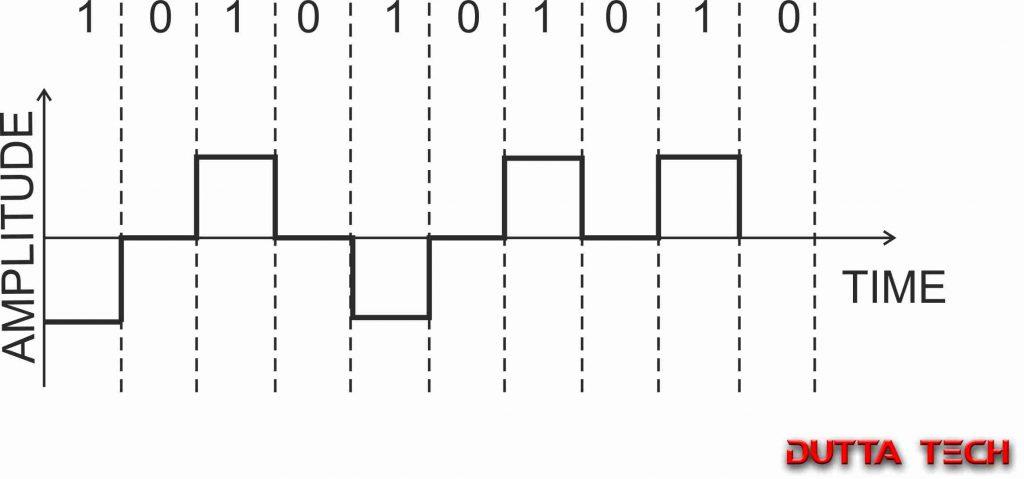
The figure shows Bipolar AMI Encoding
- Pseudo ternary: In this case, one bit represents zero voltage, while the zero bit represents alternating positive and negative voltages.
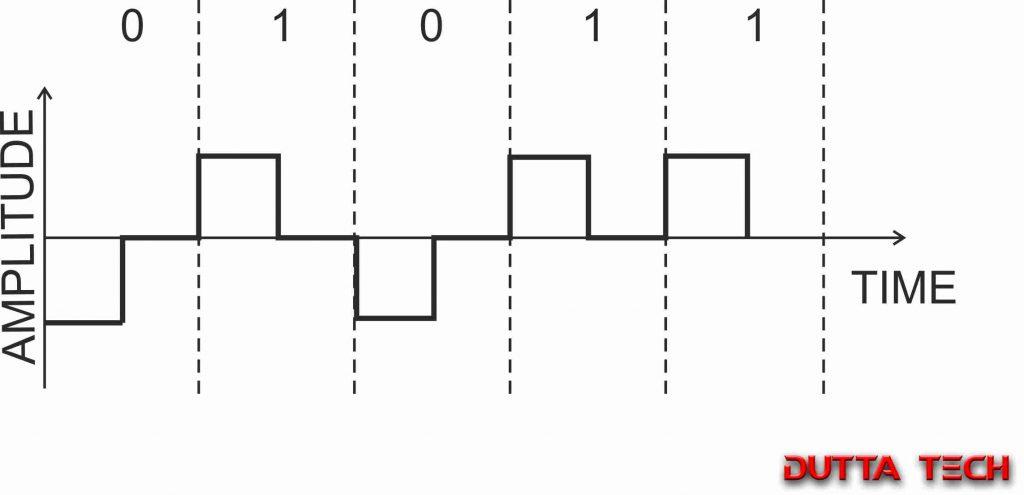
The figure shows the Bipolar Pseudoternary Scheme
Multilevel Method
mBnL is another name for the Multilevel Coding Method, where m is the length of the Binary pattern.
The binary data is denoted by B, while the length of the signal pattern is denoted by n.
The number of levels in the signaling is indicated by the letter L.
This scheme is available in three separate methods:
• 4D-PAM5
• 2B1Q
• 8B6T
Multi Transition(MLT-3)
This technique employs three levels (+V, 0,-V), as well as more than three transition rules to move between them.
The following are the rules:
• If the next bit is 0, there is no transition.
• The next level will be 0 if the next bit is 1 and the current level is not 0.
• If the next bit is 1 and the current level is 0, the next non-zero level is the inverse of the previous one.
For long 0s, this approach does not do self-synchronization.
Block Coding
Redundancy is the fundamental issue with line coding. The Block Codes are mostly used to manipulate a block of bits. They employ the preset algorithm to take a group of bits and combine them with a coded component to form a big block. After the receiver determines the authenticity of the received sequence, this huge block is examined at the receiver. As a result, block coding converts an m-bit block into an n-bit block, where n>m.
mB/nB encoding is another name for this block coding technology.
This technique overcomes the disadvantages of line coding and produces superior results.
The following are the various types of Block Coding:
• 4B/5B
• 8B/10B
Scrambling
By introducing scrambling, we can modify the line and block coding.
It’s worth noting that scrambling, as opposed to block coding, is mostly done during the encoding process.
The system must primarily insert the required pulses based on the scrambling rules.
The two most frequent scrambling techniques are listed below:
• B8ZS (B8ZS) (Bipolar with 8-zero substitution)
The sequence 000VB0VB replaces eight consecutive zero-level volts in this technique.
In this sequence, V stands for violation, which is a nonzero voltage that violates the AMI encoding rule.
According to the AMI rule, the B in the given sequence represents Bipolar, which simply means nonzero voltage level.
Two examples of the B8ZS scrambling technique are shown in the diagram below:
• HDB3 (High-Density Bipolar 3-zero)
This approach is more conservative than B8ZS, as it substitutes a sequence of 000V or B00V for four consecutive zero-level voltages.
The main reason for using two separate substitutes is to keep the number of nonzero pulses even after each one.
The following are two rules to follow for this purpose:
1. If the total number of nonzero pulses after the last substitution is odd, we’ll employ the 000V substitution pattern, which evens out the total number of nonzero pulses.
2. If the number of nonzero pulses after the last replacement is even, we’ll employ the B00V substitution pattern, which will bring the total number of nonzero pulses to an even number.
The diagram below depicts many scenarios in the HDB3 scrambling technique:
